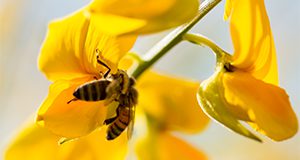Abstract
Climate, plant communities, and timing of floral resources differ significantly across Florida, which means that management of European honey bee colonies in Florida differs as well. This 8-page fact sheet written by James D. Ellis, Mary C. Bammer, and William H. Kern and published by Department of Entomology and Nematology outlines a management calendar created for Florida beekeepers. It is specific to region (north, central, and south Florida) and month and includes recommendations for major management considerations like when to treat for parasites or pathogens and when to feed colonies or harvest honey. This management calendar, while not exhaustive, is a valuable reference or starting point for honey bee colony management in Florida.
http://edis.ifas.ufl.edu/in848
References
DeBerry, S., J. Crowley, and J. D. Ellis. 2012. Swarm Control for Managed Beehives. ENY-160. Gainesville: University of Florida Institute of Food and Agricultural Sciences. http://edis.ifas.ufl.edu/in970
Ellis, J. D., W. H. Kern, and C. M. Zattel Nalen, 1992. Preserving Woodenware in Beekeeping Operations. ENY-125. Gainesville: University of Florida Institute of Food and Agricultural Sciences. http://edis.ifas.ufl.edu/aa244
Ellis, J. D. and A. Ellis. 2010. Small Hive Beetle, Aethina tumida Murray (Insecta: Coleoptera: Nitidulidae). EENY-474. Gainesville: University of Florida Institute of Food and Agricultural Sciences. http://edis.ifas.ufl.edu/in854
Ellis, A., J.D. Ellis, M. K. O'Malley, and C. M. Zettel Nalen. 2010. The Benefits of Pollen to Honey Bees. ENY-152. Gainesville: University of Florida Institute of Food and Agricultural Sciences. http://edis.ifas.ufl.edu/in868
Florida Department of Agriculture and Consumer Services. 2018. Apiary Inspector Directory. Retrieved from https://www.freshfromflorida.com/Divisions-Offices/Plant-Industry/Bureaus-and-Services/Office-Locations/Apiary-Inspector-Directory
Gentry, N. and J. D. Ellis. 2012. Bottling, Labeling, and Selling Honey in Florida. ENY-159. Gainesville: University of Florida Institute of Food and Agricultural Sciences. http://edis.ifas.ufl.edu/in918
Honey Bee Health Coalition. (2016, November 4). 2 3 Sampling Methods 111116. Retrieved from https://www.youtube.com/watch?v=IgPfT9FQxLc&feature=youtu.be
Honey Bee Health Coalition. 2016. Tools for Varroa Management: A Guide to Effective Varroa Sampling and Control. The Keystone Policy Center. Retrieved from https://honeybeehealthcoalition.org/wp-content/uploads/2016/11/HBHC-Guide_Varroa_Interactive_v5_31October2016.pdf
Mortensen, A. N, C, J, Jack, M. McConnell, L. Teigen, and J. D. Ellis. 2016. How to Quantify Nosema Spores Infection Rate in a Honey Bee Colony. ENY-167. Gainesville: University of Florida Institute of Food and Agricultural Sciences. http://edis.ifas.ufl.edu/in1123
United States Food and Drug Administration. 2017. Using Medically Important Antimicrobials in Bees - Questions and Answers. Retrieved from https://www.fda.gov/AnimalVeterinary/DevelopmentApprovalProcess/ucm589399.htm
University of Florida, Institute of Food and Agricultural Sciences, Extension. 2018. Districts, Directors and County Offices. Retrieved from http://sfyl.ifas.ufl.edu/find-your-local-office/
Unless otherwise specified, articles published in the EDIS journal after January 1, 2024 are licensed under a Creative Commons Attribution-NonCommercial-NoDerivs 4.0 International (CC BY-NC-ND 4.0) license.

